Synaptics Bundle
Who Really Controls Synaptics?
Navigating the tech world requires understanding the power dynamics behind the companies shaping our future. Unraveling the Synaptics SWOT Analysis is just the beginning; knowing who owns Synaptics is critical for investors and industry watchers alike. From its humble beginnings to its current status as a key player in human interface solutions, Synaptics' ownership structure has evolved significantly. Understanding the Synaptics company ownership will help you make informed decisions.
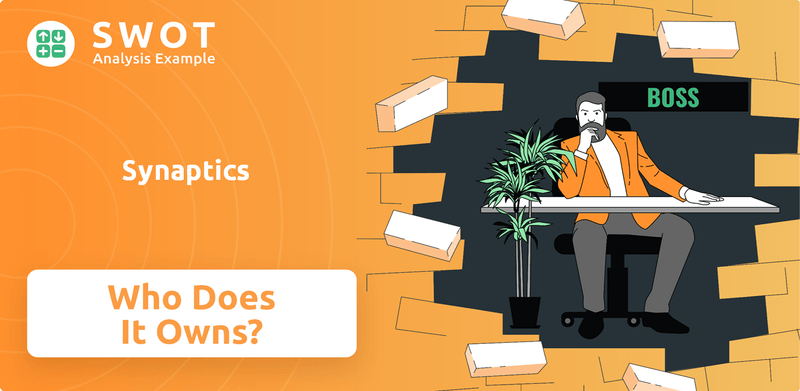
This exploration into Synaptics ownership will uncover the key players, from institutional investors to the leadership team, and how their influence shapes the company's strategic decisions. Discover the Synaptics corporation's ownership structure, trace its history, and understand the forces driving its performance in the competitive semiconductor market. Whether you're a potential investor or a business strategist, grasping the details of Synaptics ownership is crucial for making informed decisions.
Who Founded Synaptics?
The story of Synaptics begins in 1986 with its co-founders, Carver Mead and Federico Faggin. This collaboration aimed to develop chips that could mimic the functions of the human brain. Their work drew on research in neural networks and transistors, setting the stage for Synaptics' early focus on pattern recognition.
In its early years, from 1986 to 1998, Synaptics concentrated on building pattern recognition products. One notable example was the 'Silicon Retina,' a circuit board designed to emulate the visual processing of the human retina. In 1991, Synaptics patented a refined 'winner-take-all' circuit, which was used to teach neural networks to recognize patterns and images, a significant step in its technological development.
While specific details about the initial equity split or shareholding percentages of the founders at the company's inception are not available in public records, the company's early focus was on innovation in the field of pattern recognition. Understanding the early ownership structure provides context for the company's trajectory and its evolution into a key player in the tech industry. The company's journey highlights the importance of early technological advancements and the vision of its founders.
Information on the initial equity split or shareholding percentages of the founders is not readily available in public records. Early backers, angel investors, or friends and family who acquired stakes during the initial private phase are also not extensively disclosed. However, the company's early focus on pattern recognition and neural networks laid the groundwork for its future success. For a broader view of the competitive environment, you can explore the Competitors Landscape of Synaptics.
- The founders, Carver Mead and Federico Faggin, were instrumental in the initial stages.
- Synaptics began as an internal data tool of Vy Capital.
- Early investors in the separate entity, Synaptic, included Ribbit, Felicis, and Vy Capital.
- The company's initial focus was on pattern recognition products.
Synaptics SWOT Analysis
- Complete SWOT Breakdown
- Fully Customizable
- Editable in Excel & Word
- Professional Formatting
- Investor-Ready Format
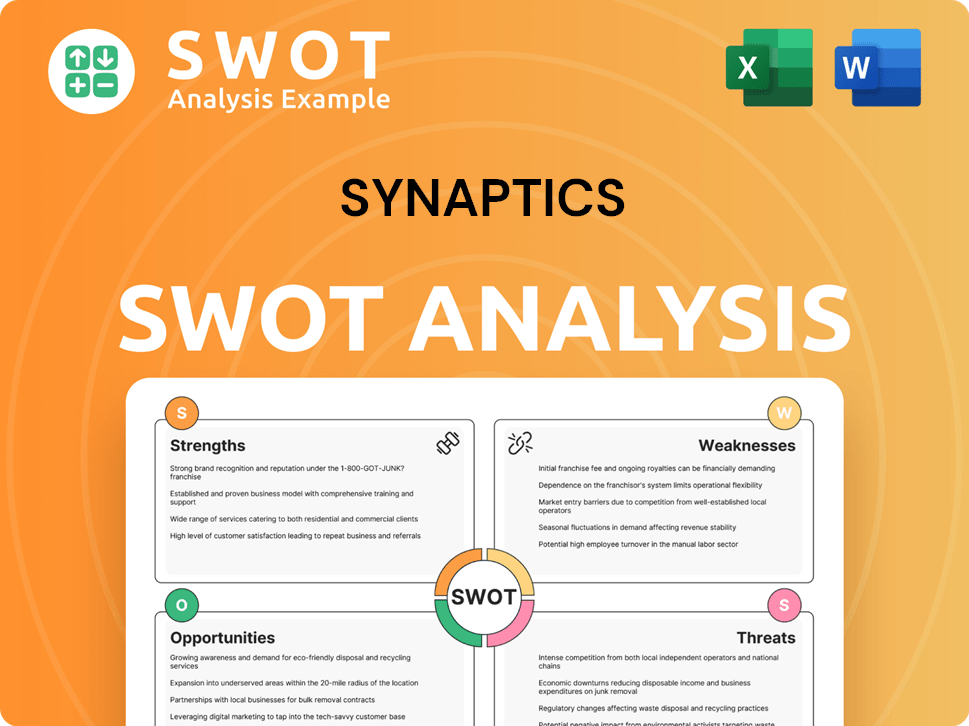
How Has Synaptics’s Ownership Changed Over Time?
The journey of Synaptics, a prominent technology company, into the public domain began with its Initial Public Offering (IPO) on January 29, 2002. The IPO offered 5 million shares of common stock at $11.00 per share. Underwriters had the option to purchase an additional 750,000 shares. This initial public offering marked a pivotal moment, transforming the company's ownership structure and opening it up to a broader base of investors.
As of May 30, 2025, the stock closed at $58.76, reflecting the market's valuation of the company. The shift to a publicly traded entity has significantly altered the ownership dynamics, with institutional investors, retail investors, and insiders now comprising the major shareholder groups. This transition has influenced the company's strategic direction and operational decisions.
| Ownership Category | Approximate Ownership | Notes |
|---|---|---|
| Institutional Investors | Approximately 83.18% | Major influence on company decisions |
| Insiders | Around 2.16% | Includes company executives and board members |
| Public Companies and Individual Investors | About 14.66% | Represents the remaining shareholders |
The financial performance of Synaptics in fiscal year 2024 revealed a net revenue of $959.4 million, a decrease of 29.20% compared to the previous year's $1.36 billion. However, GAAP net income for fiscal year 2024 reached $125.6 million, marking a 70.65% increase. The company's strategic financial moves, such as the share repurchases, including $74.50 million in stock buybacks as of December 31, 2024, and the $400.0 million convertible senior notes offering in November 2024, have also influenced the ownership structure and capital allocation, impacting the company's future direction.
The majority of Synaptics ownership is held by institutional investors, indicating significant influence from these entities. The company's financial strategies, like share repurchases and convertible notes offerings, impact the ownership structure. Understanding the Synaptics company ownership structure is crucial for investors and stakeholders.
- The Vanguard is noted as owning the most shares of Synaptics.
- The IPO in 2002 marked a significant shift in the company's ownership.
- Financial results in 2024 showed revenue decrease but net income increase.
- Share repurchases and convertible notes offerings are key financial strategies.
Synaptics PESTLE Analysis
- Covers All 6 PESTLE Categories
- No Research Needed – Save Hours of Work
- Built by Experts, Trusted by Consultants
- Instant Download, Ready to Use
- 100% Editable, Fully Customizable
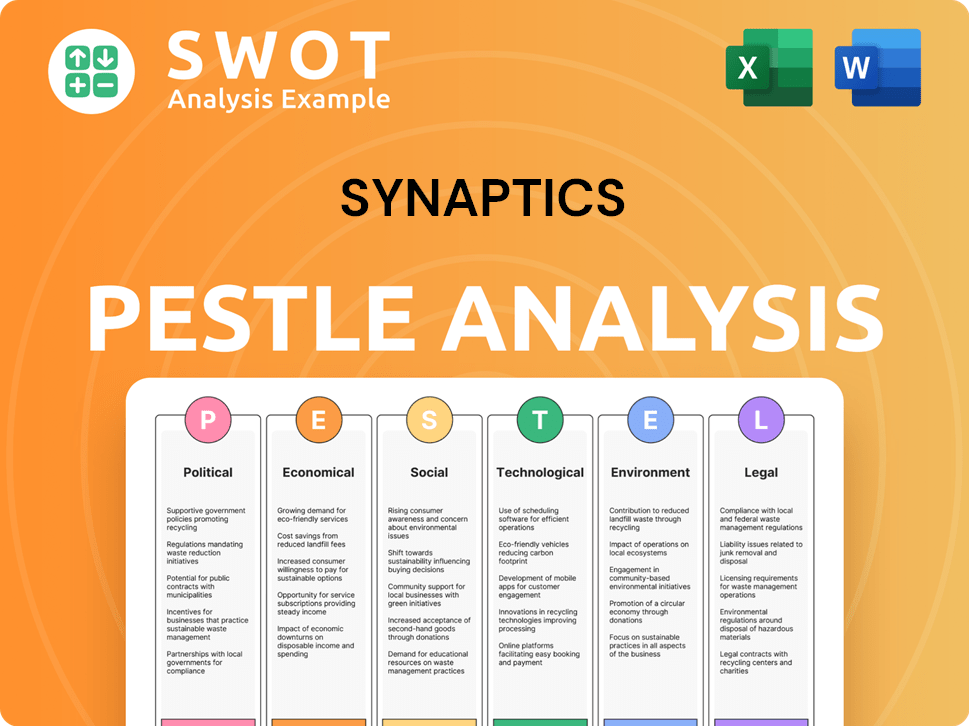
Who Sits on Synaptics’s Board?
As of May 2025, the leadership of the board of directors for the company includes Nelson Chan as Chairman. Following the transition in early 2025, Rahul Patel was appointed as the new President and Chief Executive Officer and a Director. Ken Rizvi continues to serve as the Chief Financial Officer. This structure highlights the board's active role in leadership transitions and strategic direction, especially during changes at the CEO level. Understanding the Marketing Strategy of Synaptics is also crucial for investors.
The board typically comprises a mix of independent directors and those representing company management. The presence of an Executive Chairman, such as Nelson Chan, during key leadership changes underscores the board's involvement in strategic oversight. While the exact representation of major shareholders on the board isn't explicitly detailed in public reports, the board's actions suggest a focus on maintaining stability and guiding the company through strategic decisions.
| Board Member | Title | Date of Appointment (Approximate) |
|---|---|---|
| Nelson Chan | Chairman | May 2025 |
| Rahul Patel | President and CEO, Director | May 2025 |
| Ken Rizvi | Chief Financial Officer | Ongoing |
Synaptics operates with a one-share-one-vote structure, common among Nasdaq-listed public companies. At the Annual Meeting on October 29, 2024, a significant 94.07% of outstanding shares were present, indicating strong shareholder engagement. Key proposals voted on included the election of directors, the ratification of the independent auditor, and the approval of the 2019 Equity and Incentive Compensation Plan, which increased authorized shares by 1,400,000. There were no prominent proxy battles or activist investor campaigns detailed in the provided information for the 2024-2025 period, suggesting a stable governance environment for the company.
The board of directors plays a crucial role in the company's strategic direction, especially during leadership transitions. Shareholder participation is high, with nearly all outstanding shares represented at the 2024 Annual Meeting. The company's voting structure is straightforward, with one share equating to one vote.
- Nelson Chan serves as the Chairman.
- Rahul Patel is the President and CEO.
- Ken Rizvi continues as CFO.
- Shareholder participation is high.
Synaptics Business Model Canvas
- Complete 9-Block Business Model Canvas
- Effortlessly Communicate Your Business Strategy
- Investor-Ready BMC Format
- 100% Editable and Customizable
- Clear and Structured Layout
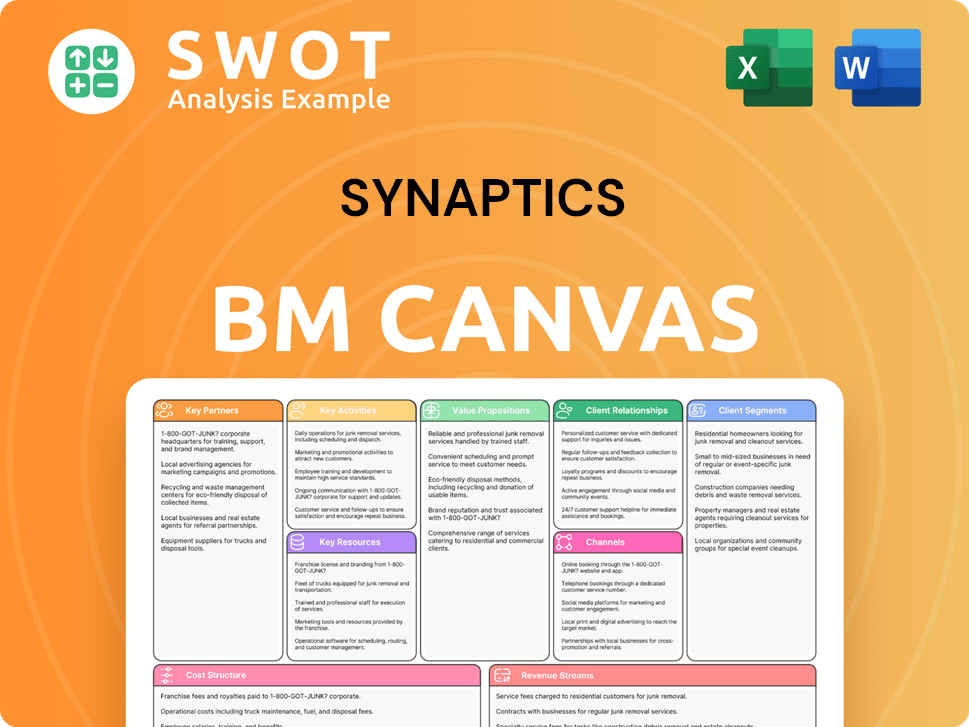
What Recent Changes Have Shaped Synaptics’s Ownership Landscape?
Over the past few years, several developments have influenced the ownership profile of the Synaptics company. Leadership changes have been notable; in February 2025, Michael Hurlston's departure as President and CEO led to CFO Ken Rizvi's interim role. Rahul Patel was appointed as the new President and CEO in May 2025, concluding the interim period.
Financially, Synaptics reported a net revenue of $959.4 million for fiscal year 2024, and a GAAP net income of $125.6 million. Despite industry challenges, the company's IoT products showed significant growth, increasing by 63% year-over-year in the fourth quarter of fiscal 2024. Synaptics has also engaged in share buybacks, with quarterly buybacks amounting to $74.50 million as of December 31, 2024. A $400.0 million convertible senior notes offering in November 2024 was priced, which could affect ownership through potential conversion into shares.
| Metric | Fiscal Year 2024 | Change |
|---|---|---|
| Net Revenue | $959.4 million | Decrease from previous year |
| GAAP Net Income | $125.6 million | N/A |
| IoT Revenue Growth (Q4 2024) | 63% year-over-year | Significant increase |
| Share Buybacks (as of Dec 31, 2024) | $74.50 million (quarterly) | Ongoing |
| Convertible Senior Notes Offering | $400.0 million | Issued in November 2024 |
Industry trends indicate increased institutional ownership in the semiconductor sector, and Synaptics is no exception. The company's focus on its IoT business, including acquisitions like Broadcom's wireless IoT business in 2020 and DSP Group Inc. in 2021, has reshaped its strategic direction and potentially its investor base. For more insights into the company's background, consider reading the Brief History of Synaptics. While the outlook for 2024 suggested some softness due to industry-wide inventory issues, Synaptics anticipates a gradual improvement in leverage by mid-2025 as demand rebounds. This strategic shift and financial management are key factors influencing who owns Synaptics and the future of Synaptics corporation.
Michael Hurlston stepped down as CEO in February 2025. Ken Rizvi served as Interim CEO. Rahul Patel appointed as new CEO in May 2025.
Fiscal year 2024 net revenue was $959.4 million. GAAP net income was $125.6 million. IoT business showed significant growth in Q4 2024.
Share buybacks totaled $74.50 million (quarterly) as of December 31, 2024. $400.0 million convertible senior notes were offered in November 2024.
Increased focus on IoT business. Acquisitions of Broadcom's wireless IoT business and DSP Group Inc. are key. Anticipated improvement in leverage by mid-2025.
Synaptics Porter's Five Forces Analysis
- Covers All 5 Competitive Forces in Detail
- Structured for Consultants, Students, and Founders
- 100% Editable in Microsoft Word & Excel
- Instant Digital Download – Use Immediately
- Compatible with Mac & PC – Fully Unlocked
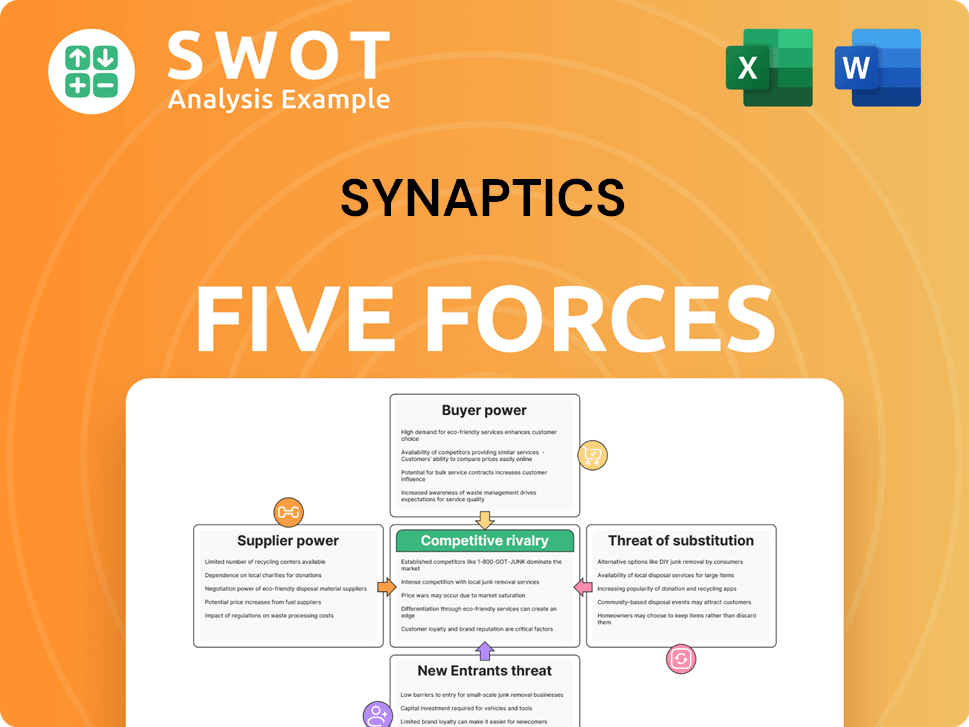
Related Blogs
- What are Mission Vision & Core Values of Synaptics Company?
- What is Competitive Landscape of Synaptics Company?
- What is Growth Strategy and Future Prospects of Synaptics Company?
- How Does Synaptics Company Work?
- What is Sales and Marketing Strategy of Synaptics Company?
- What is Brief History of Synaptics Company?
- What is Customer Demographics and Target Market of Synaptics Company?
Disclaimer
All information, articles, and product details provided on this website are for general informational and educational purposes only. We do not claim any ownership over, nor do we intend to infringe upon, any trademarks, copyrights, logos, brand names, or other intellectual property mentioned or depicted on this site. Such intellectual property remains the property of its respective owners, and any references here are made solely for identification or informational purposes, without implying any affiliation, endorsement, or partnership.
We make no representations or warranties, express or implied, regarding the accuracy, completeness, or suitability of any content or products presented. Nothing on this website should be construed as legal, tax, investment, financial, medical, or other professional advice. In addition, no part of this site—including articles or product references—constitutes a solicitation, recommendation, endorsement, advertisement, or offer to buy or sell any securities, franchises, or other financial instruments, particularly in jurisdictions where such activity would be unlawful.
All content is of a general nature and may not address the specific circumstances of any individual or entity. It is not a substitute for professional advice or services. Any actions you take based on the information provided here are strictly at your own risk. You accept full responsibility for any decisions or outcomes arising from your use of this website and agree to release us from any liability in connection with your use of, or reliance upon, the content or products found herein.